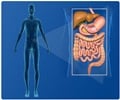A more severe and persistent type of food allergy may develop to the same food for which the child would have outgrown his or her allergy, say experts.

"These two types of allergy have some elements in common, but patients with EoE usually do not go on to develop tolerance to the foods that trigger EoE," said paediatric allergist Jonathan M. Spergel from Children's Hospital of Philadelphia.
EoE involves swelling and inflammation of the esophagus. Often painful, EoE may cause weight loss, vomiting, heartburn and swallowing difficulties.
It can affect any age group, but is often discovered first in children experiencing feeding difficulties and failure to thrive.
The researchers team compared EoE with IgE-mediated food allergy - the more familiar type of food allergy.
Nuts, eggs or milk, for example, may trigger hives, other skin reactions, vomiting or other symptoms.
Advertisement
Of that number, 425 children could be shown to have a definite food causing their condition - most commonly milk, egg, soy and wheat.
Advertisement
"The pattern we found in those 17 patients suggests that the two types of food allergy operate by different mechanisms and cause different functional changes," Spergel said.
"However, this pattern also raises the possibility that prior IgE-mediated food allergy may predispose a patient to developing EoE to the same food."
According to the research, patients who undergo desensitization therapy for IgE-mediated foods allergies subsequently develop EoE to the same food - a fact that physicians should consider in managing care for patients with food allergies.
In desensitization therapy, a clinician exposes a patient to miniscule amount of an allergy-producing food, then gradually increases the amount - aiming for the patient to become tolerant to that food.
The findings were shared at the annual meeting of the American Academy of Allergy, Asthma and Immunology in San Diego.
Source-IANS















